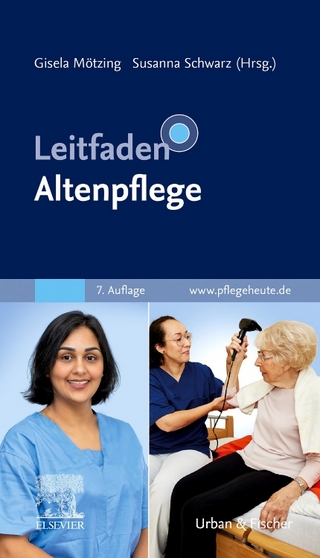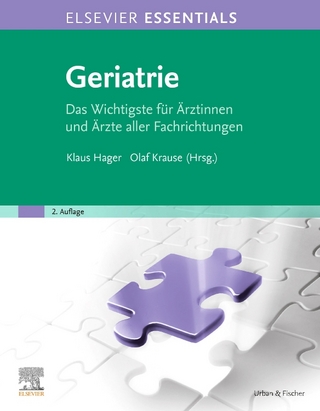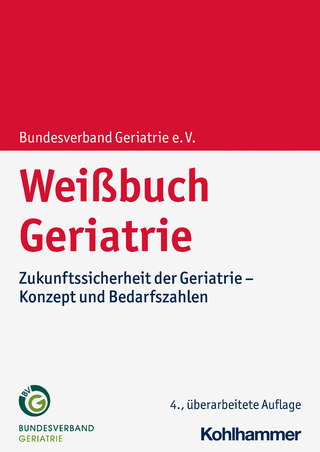
Locomotion and Posture in Older Adults
Springer International Publishing (Verlag)
978-3-031-74122-7 (ISBN)
- Noch nicht erschienen - erscheint am 29.01.2025
- Versandkostenfrei innerhalb Deutschlands
- Auch auf Rechnung
- Verfügbarkeit in der Filiale vor Ort prüfen
- Artikel merken
This book sheds new light on the effects of aging and movement disorders on movement control during walking and postural tasks. Understanding these dynamics is more important than ever as we face a future where the number of older adults is projected to double by 2050. The severity of this framework is exacerbated when aging is accompanied by movement disorders such as Parkinson's disease, Chorea, Multiple Sclerosis, Dystonia, and Huntington's disease. The book explores how complex interactions between musculoskeletal and neural systems are required for efficient execution of daily activities like walking and maintaining posture.
The chapters in this comprehensive volume address the multifaceted challenges posed by aging and movement disorders in gait and postural control, including innovative rehabilitation strategies and the role of artificial intelligence. Expert contributors examine how environmental, sensorial, motor, cognitive, and individual factors influence locomotor and postural activities. Readers will discover cutting-edge research findings that address critical questions about planning, performance, and impairment in these essential functions. This book is a must-read for anyone seeking to understand and reduce the effects of aging and movement disorders on gait and posture.
This book is an invaluable resource for clinicians, physical therapists, occupational therapists, psychologists, biologists, researchers, health professionals, as well as those involved in physical education and sports medicine. It highlights the mechanisms involved in controlling and planning postural and gait tasks in both neurologically healthy older individuals and those who suffer from movement disorders, offering new perspectives on interventions and technologies designed to improve understanding or delay impairments due to aging or movement disorders on gait and posture. Whether you're a practitioner or researcher in related fields, this book equips you with the essential knowledge to enhance the quality of life for older adults facing these challenges.
Fabio Augusto Barbieri: Associate Professor at São Paulo State University (Unesp) - School of Sciences - Department of Physical Education (Bauru, Brazil), where he is the coordinator of the Human Movement Research Laboratory (MOVI-LAB) and professor of the post-graduate program in Movement Sciences (Unesp). Bachelor's and licentiate degrees in Physical education and Master of Science in Movement Sciences. Double PhD in Human Movement Science at Vrije University (Amsterdam, the Netherlands) and Unesp. Main research interests are aimed at understanding the neuromechanisms of human movements. Our research's approach consists of a combination of experimental, interventional and clinical studies aiming at unraveling the interplay between neural, perceptual and motor systems and considering the organismic, task-related, and environmental constraints. These approaches are developed to improve and rehabilitate human movement. Specifically, the main interests are on 1) the impact of movement disorders in gait and posture neuromechanisms and adaptability, 2) rehabilitation strategies, such as motor (e.g., exercise) and non-motor interventions, to improve movement in people with movement disorders.
Rodrigo Vitório: Vice-Chancellor's Research Fellow (Assistant Professor) at the Department of Sport, Exercise and Rehabilitation (Northumbria University, Newcastle upon Tyne, UK). Bachelor's in Physical Education (2006), Master of Science (2009), and PhD (2015) in Human Movement Science. His overall research goal is to improve mobility and reduce the risk of falls in the context of aging and Parkinson's disease. His projects are focused on 1) better understanding the neural correlates of gait and balance impairments (through the combination of portable neuroimaging technologies with movement analysis) and 2) developing enhanced therapeutic strategies (e.g., non-invasive brain stimulation, medication, biofeedback, sensory cueing, and exercise) to address mobility impairments.
Paulo Cezar Rocha dos Santos: Paulo Cezar Rocha dos Santos: Postdoctoral Fellow at the Department of Computer Science and Applied Mathematics of the Weizmann Institute of Science (Rehovot, Israel) and IDOR/Pioneer Science Initiative (Rio de Janeiro, Brazil). Bachelor's in physical education (2009) and Master of Science (2013) in Human Movement Science at São Paulo State University - UNESP (Rio Claro, Brazil) and double PhD in Human Movement Science (2020) at the University of Groningen (Groningen, the Netherlands) and UNESP. He has been developing research in collaboration with the Center of Advanced Technologies in Rehabilitation (CATR - Sheba Hospital, Israel) aiming to examine the underlying cortical and mechanistic aspects of bilateral control of gait in neurological diseases. Main research interests involve understanding cortico-muscular control related to postural and gait adaptability to internal and external perturbation/stimuli; examining gait and posture from an integrative view; and developing and/or optimizing prevention/rehabilitation strategies, mainly related to exercises, for aging and age-related diseases.
1.Clinical aspects of movement disorders: effects on walking and posture.- 2.MoBI: Mobile Brain/Body Imaging to understand walking and balance.- 3.How Older Adults can Avoid Falls via Proactive and Reactive Gait Adaptability: A Brief Introduction.- 4.Effects of aging on gait and posture.- 5.Synergic control of action stabilizing vertical posture.- 6.Balance Control in Older Adults.- 7.Gait Stability and Aging.- 8.Visual control of adaptive locomotion and changes due to ageing.- 9.Cognition, Gait Disorders and Fall Risk in Older Individuals.- 10.GAIT INITIATION IN OLDER PEOPLE: CONCEPTS,CLINICAL IMPLICATIONS AND METHODOLOGY.- 11.An overview of the effects of experimentally induced fatigability on walking in aging and Parkinson's disease.- 12.Parkinson's Disease and Gait Asymmetry.- 13.Freezing of gait in Parkinson's disease: balance, gait, and neurophysiological aspects.- 14.Motor and sensory changes in postural control of older adults.- 15.Effects of Vision on Postural Control in Neurologically Healthy Individuals.- 16.FALLS AND POSTURAL CONTROL IN OLDER ADULTS: EFFECTS OF THE PHYSICAL EXERCISE AND THE IMPLICATIONS FOR ACTIVITIES OF DAILY.- 17.Fear and Anxiety in Older Adults and its Impact on Postural Control.- 18.Postural control and physical function in older adults with chronic musculoskeletal pain: effects of the physical exercises and the implications for activities of daily living.- 19.Balance Control in People with Parkinson's Disease.- 20.Postural Control and Somatosensory Information: Effects of Aging and Parkinson's Disease.- 21.New insights for identifying dynamic postural instability in early stages of Parkinson's disease.- 22.Mobility and Cognitive Function in Older Adults with Multiple Sclerosis: Physical Activity and Exercise Training as Rehabilitation Therapy.- 23.Effects of Physical Activity on Walking in Individuals with Parkinson's Disease.- 24.Split-belt Treadmill to treat Gait Disorders.- 25.One plus one is more than two: enhanced physical, motor and cognitive gains from simultaneous multicomponent training in older adults.- 26.Exercise and balance in older adults with movement disorders.- 27.Contribution of Virtual Reality (Nintendo Wii)for Exercise Training and Rehabilitation.- 28.Towards context-aware free-living digital biomarkers for gait assessment.- 29.Transcranial direct current stimulation effect on locomotion and posture.- 30.Using mHealth technology to monitor people with Parkinson's disease.- 31.Remote balance and gait assessment via telehealth - are we ready for this?.- 32.Artificial intelligence to locomotion in movement disorders.- 33.Using mHealth technology to monitor arm-use behavior, gait, and physical activity in stroke survivors.- 34.Mental practice and gait improvements.
| Erscheint lt. Verlag | 29.1.2025 |
|---|---|
| Zusatzinfo | Approx. 700 p. 82 illus., 42 illus. in color. |
| Verlagsort | Cham |
| Sprache | englisch |
| Maße | 155 x 235 mm |
| Themenwelt | Medizin / Pharmazie ► Medizinische Fachgebiete ► Geriatrie |
| Medizin / Pharmazie ► Medizinische Fachgebiete ► Neurologie | |
| Medizin / Pharmazie ► Pflege | |
| Schlagworte | aging • elderly • gait • Motor Control • Movement • movement disorders • Parkinson • Rehabilitation • rehabilitation psychology |
| ISBN-10 | 3-031-74122-6 / 3031741226 |
| ISBN-13 | 978-3-031-74122-7 / 9783031741227 |
| Zustand | Neuware |
| Haben Sie eine Frage zum Produkt? |
aus dem Bereich


